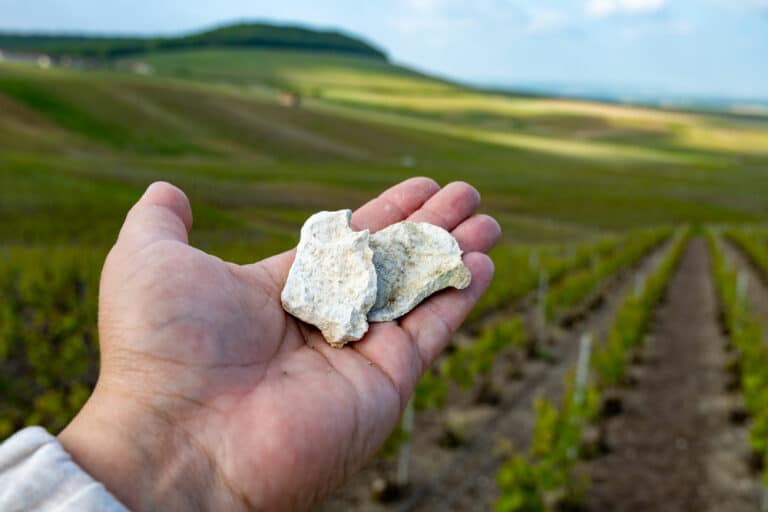
The crayères are an integral part of Champagne’s heritage. These impressive underground chalk cellars, dug several centuries ago, are today considered architectural and oenological treasures. Their role in the production...
Read More...In oenology, the terms ‘cru’, ‘grand cru’ and ‘premier cru’ are used to describe the quality and classification of wines, mainly in France. These terms are deeply rooted in winemaking tradition and reflect specific levels of quality based on terroir, production and winemaking practices. To understand these distinctions, it is essential to explore the particularities of each term and how they apply in different wine regions, notably Burgundy, Bordeaux and Champagne.
The term ‘cru’ literally means ‘growth’ or ‘cultivated land’. In the wine context, it refers to a specific vineyard or wine-growing region. A ‘cru’ can be seen as an expression of terroir, encompassing the unique characteristics of the land, climate and viticultural practices. The wine produced in a cru is supposed to reflect these distinct characteristics.
In Burgundy, for example, each cru is often a small parcel of vines with its own unique characteristics. In this region, climats and lieux-dits are often considered as crus, showing the diversity and specificity of wines produced from different parcels of land.
Premier Cru’ is a higher quality classification than “Cru”. This term is mainly used in Burgundy and Champagne. In Burgundy, vineyards classified as premiers crus are recognised for their exceptional quality but are one step below grands crus. There are around 600 premiers crus in Burgundy, and these wines are often labelled with the name of the village followed by the name of the premier cru vineyard, for example ‘Chablis Premier Cru Montée de Tonnerre’.
In Champagne, communes (villages) are classified on a quality scale ranging from 80% to 100%, with premiers crus being villages classified between 90% and 99%. These classifications influence the price of grapes sold for the production of Champagne.
‘Grand Cru represents the highest classification for a wine and is synonymous with excellence and prestige. Vineyards classified as Grand Cru are recognised for producing the finest and most expressive wines of their region.
In Burgundy, there are 33 Grand Crus, located mainly in the Côte de Nuits and Côte de Beaune. Wines from these vineyards are simply labelled with the name of the vineyard, for example, ‘Corton’ or ‘Montrachet’. These wines are recognised worldwide for their exceptional quality and ageing potential.
In Bordeaux, the classification of grands crus is a little different. The most famous classification is the 1855 Classification, commissioned by Napoleon III for the Paris Universal Exhibition. This classification ranks the region’s wines at several levels, from Premier Grand Cru Classé (such as Château Lafite-Rothschild) to Cinquièmes Crus. In Saint-Émilion, the classifications of Grand Cru and Premier Grand Cru Classé are revised periodically, to ensure that they remain dynamic and take account of changes in quality.
In Champagne, villages with 100% classification are designated as Grands Crus. There are 17 Grand Cru villages in Champagne, producing some of the most sought-after sparkling wines in the world.
The terms ‘cru’, ‘premier cru’ and ‘grand cru’ are important indicators of the quality and origin of French wines. They reflect not only the unique characteristics of the terroir but also a commitment to high standards of viticulture and winemaking. Understanding these classifications helps wine lovers navigate the complexity of wine labels and appreciate the nuances for which French wines are renowned around the world.
The crayères are an integral part of Champagne’s heritage. These impressive underground chalk cellars, dug several centuries ago, are today considered architectural and oenological treasures. Their role in the production...
Read More...The 2025 Harvest in Champagne: A Promising Vintage for Champagne Delaunois Chanez
Every autumn, Champagne beats to the rhythm of one of the most important moments of the year: the grape harvest. This crucial stage marks the culmination of a year’s work...
Read More...How to Store Champagne? A Complete Guide to Preserving Your Bottles
Champagne is a wine of elegance, celebration, and refinement. But to preserve its aromatic richness, fine bubbles, and authenticity, it’s essential to store it properly. Whether you’re planning to drink...
Read More...In oenology, the terms ‘cru’, ‘grand cru’ and ‘premier cru’ are used to describe the quality and classification of wines, mainly in France. These terms are deeply rooted in winemaking...
Read More...Enjoying a fine Champagne, such as those offered by Champagne Delaunois Chanez, is an art that goes beyond the quality of the wine itself. The choice of glass plays a...
Read More...The Champagne region is world-renowned for its exceptional sparkling wines. One of the secrets of this renown lies in the diversity of grape varieties permitted in the Champagne appellation. These...
Read More...Champagne is a symbol of celebration, refinement, and craftsmanship. Behind each sparkling flute lies a complex and meticulous process, upheld by traditional houses. Among them is the Delaunois-Chanez estate, located...
Read More...